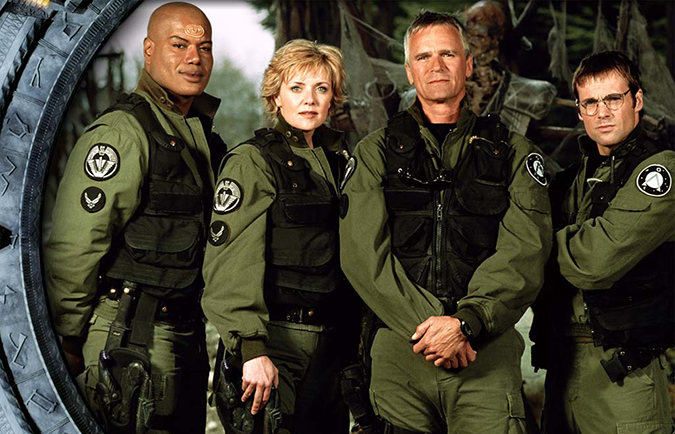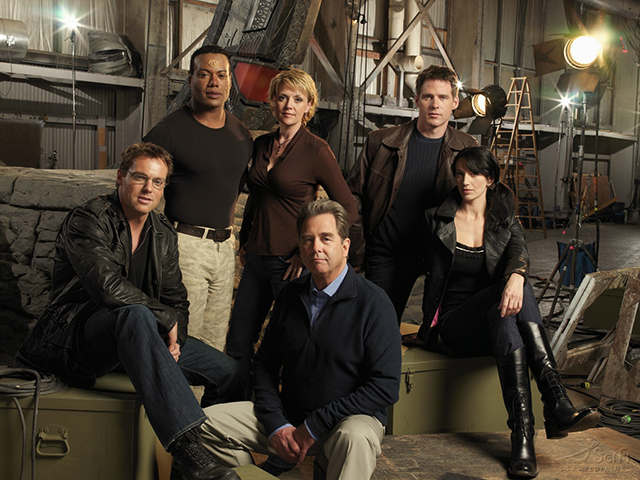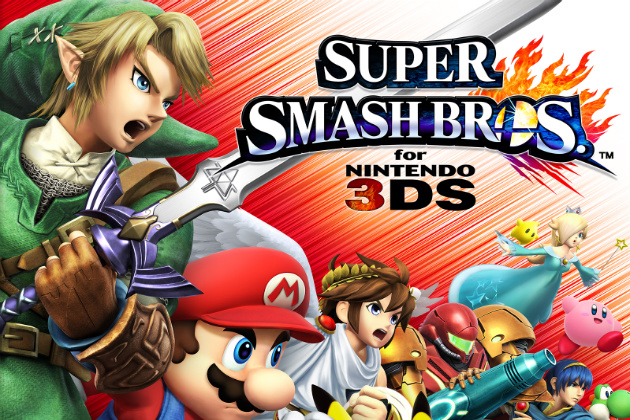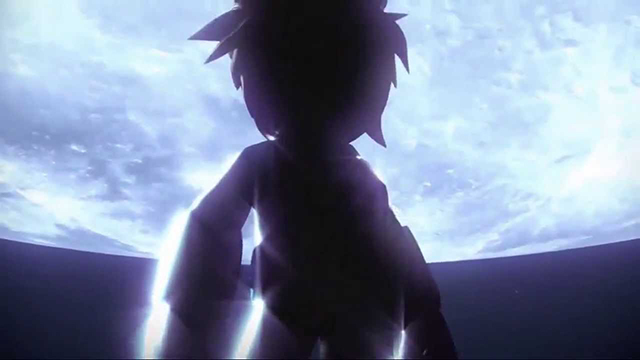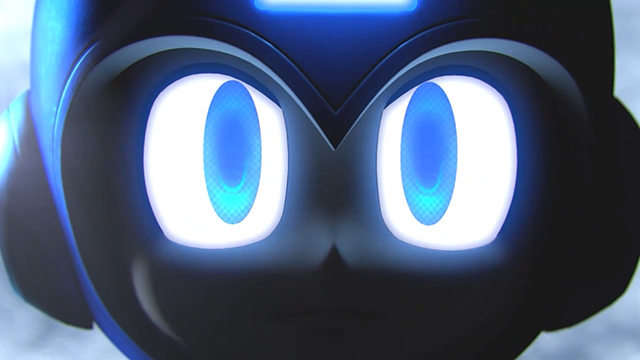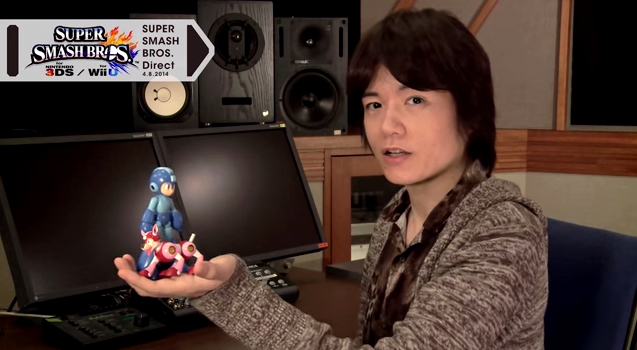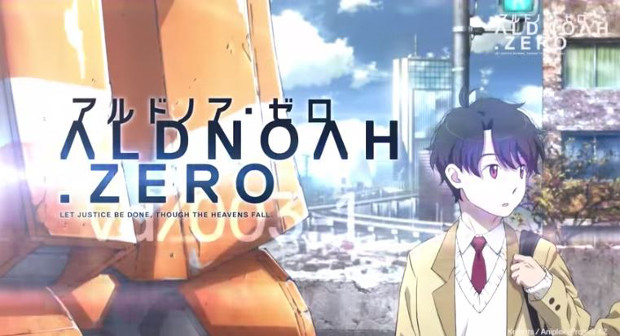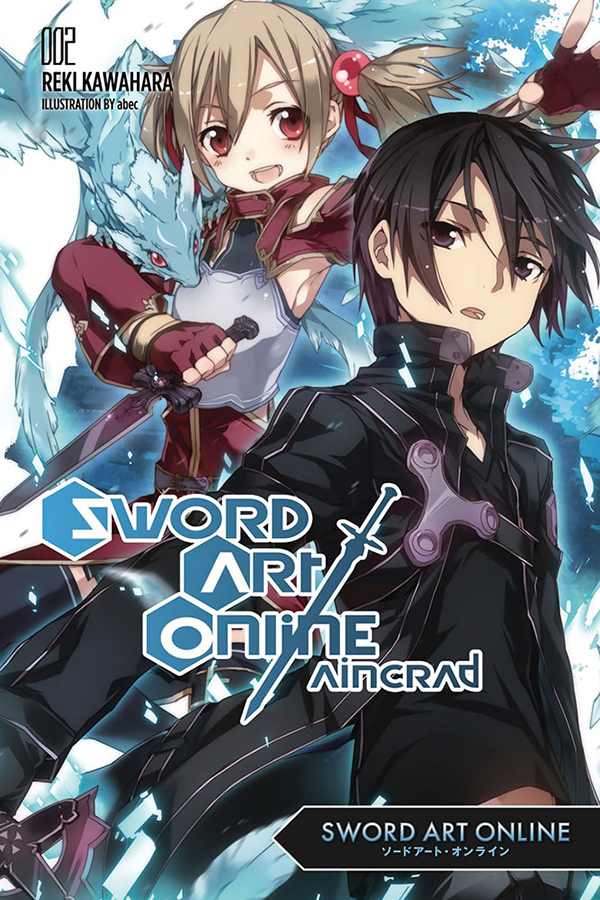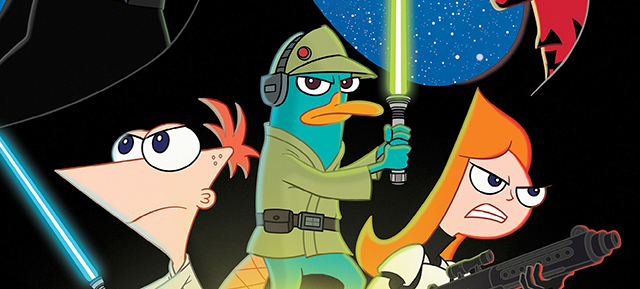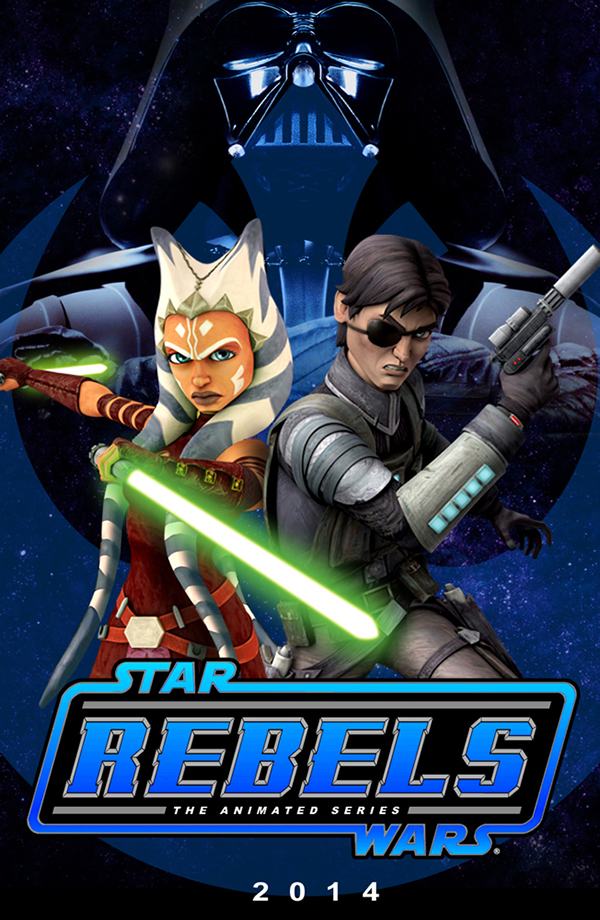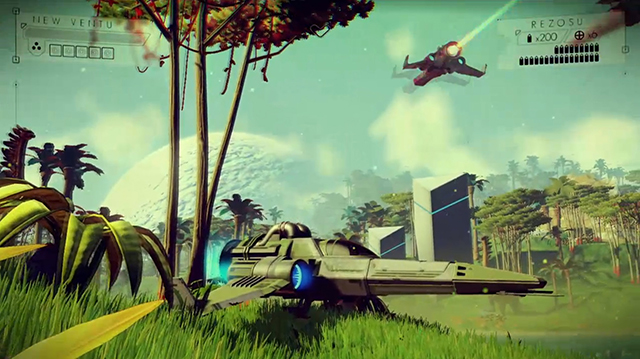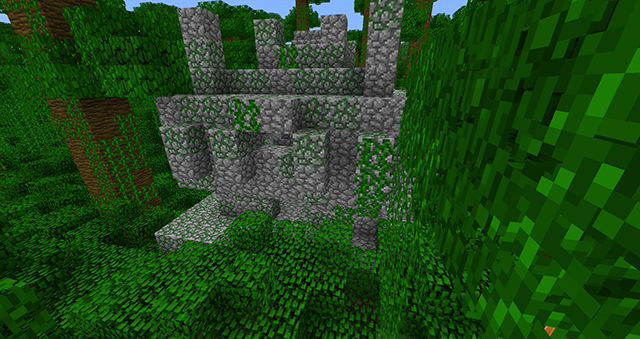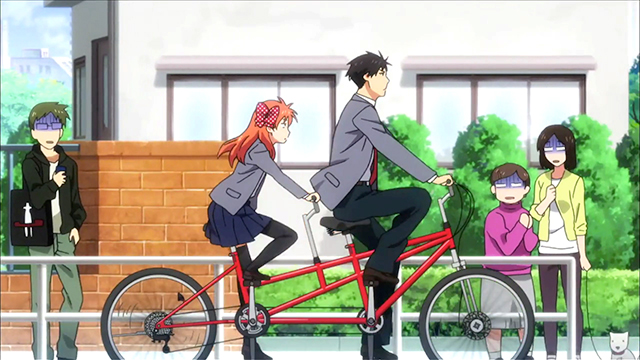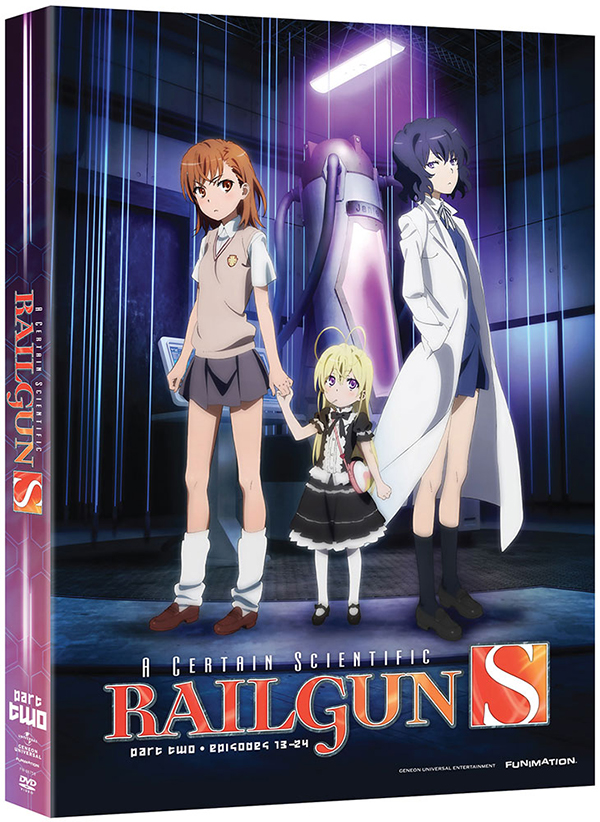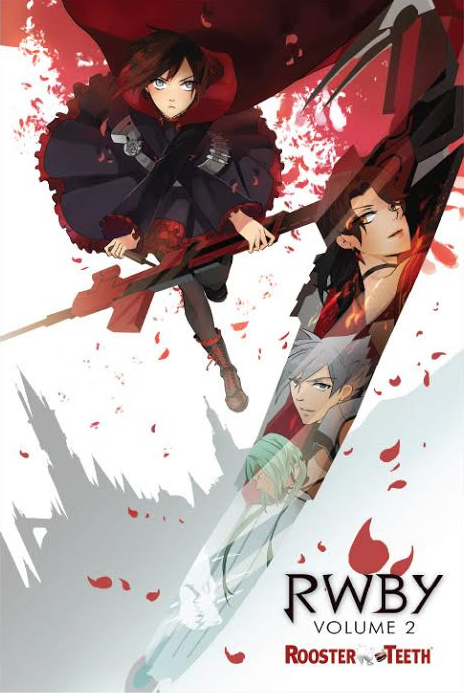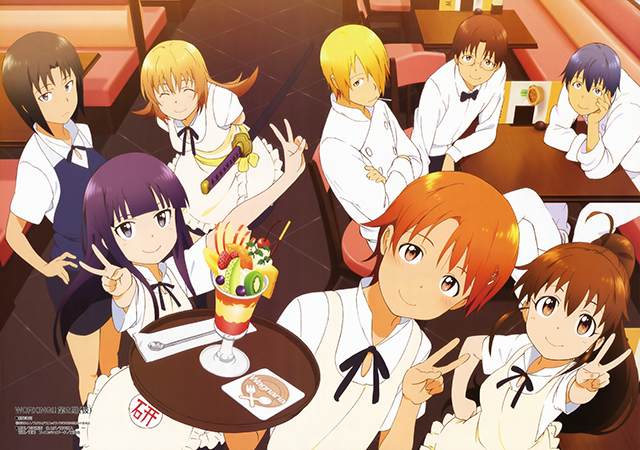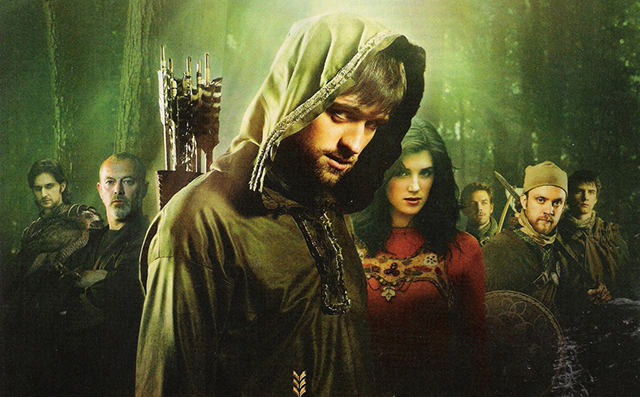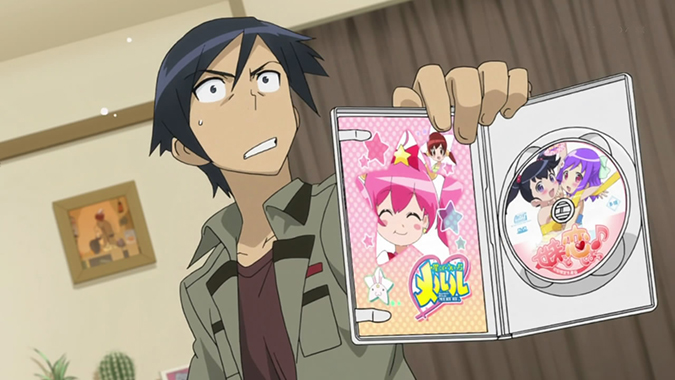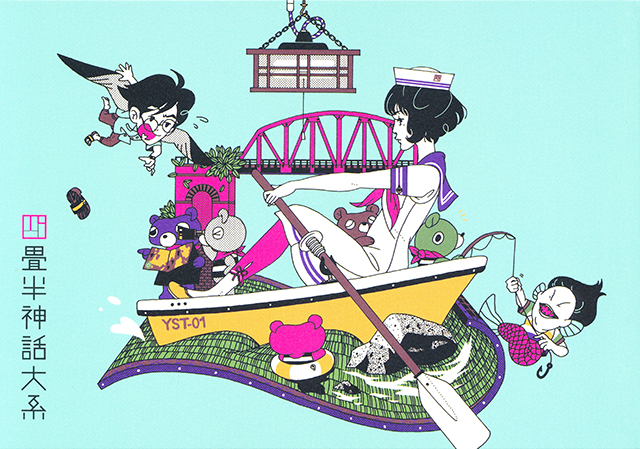Check off another item on the World Domination To-Do List, because we’ve just had our first interview. Our gaming editor Steven and editor in chief Paul recently spoke with Steven Vitte of the Gaming Journalist Gazette about how the site came to be and how we go about covering video games. You can read the full interview transcript on the GJG blog here.
Hello again everyone, and welcome to another edition of Channel Chaser! For today’s review, I decided to focus on one of my favorite franchises of all time: the sci-fi spectacular known as Stargate. Spanning seventeen seasons of TV between three different spin-offs from 1997 until 2011, Stargate has become one of the longest-running science fiction shows of all time.
I could go on talking about the intricacies of Stargate for at least three separate columns, and maybe more, but in the interest of saving time and switching up content, I figured I would go ahead and tackle all three series in one review. Together, Stargate SG-1, Stargate Atlantis, and Stargate Universe make up what in my mind is the most highly detailed and fascinating fictional world ever conceived on television. You’d better strap in for this one, because it’s a wild ride.
Stargate first began rather inauspiciously on the silver screen, when its premier movie was released in 1994. In a nutshell, the basic concept of the film was that the Great Pyramids were actually landing platforms for alien spaceships. Said aliens used the ancient Earth myths of the Egyptian gods in order to impersonate the pantheon of deities and rule over the planet, making slaves out of the primitive human population and using a ring-shaped device known as a Stargate to instantaneously transport captives to a planet called Abydos, located on the far side of the galaxy. Thousands of years later in the modern day, a U.S. Air Force team reopens the Stargate, and along with renegade Egyptologist Dr. Daniel Jackson, travels to Abydos to do battle with the aliens and free the long-lost children of Earth from oppression.
While Stargate was considered a commercial success in its time, I personally could never really get behind it. The special effects were cheesy, the plot was pretty lame, and the acting was wooden thanks for B-list stars like James Spader and Kurt Russell. In fact, it’s totally conceivable that the whole idea would have been forgotten if not for MGM’s idea to turn the movie into a series.
Launching in 1997, Stargate: SG-1 picked up where the film left off, reuniting the heroic duo of the nerdy but nice Jackson and the hard-nosed, cynical Colonel Jack O’Neill (with two Ls this time!), along with some new comrades like the brilliant and beautiful Captain Samantha Carter. The show expands on the premise of the movie and rewrites the book on the Stargate, as the team discovers that there is actually a vast network of the devices scattered across the entire galaxy on worlds populated by the ancient peoples of Earth.
Venturing through the ‘Gate on a mission of exploration, O’Neill, Carter, and Jackson are joined by alien freedom fighter Teal’c in a battle against the all-powerful Goa’uld race that lasts all ten seasons of the show’s run. In addition, multiple new baddies are introduced in the form of the insidious mechanical Replicators and the mysterious, god-like Ori, while allies like the frail but advanced Asgard and the Goa’uld splinter group the Tok’ra present themselves. It even turns out that the Stargate wasn’t actually invented by the Goa’uld, as the movie had implied, but is in fact a relic from a much more advanced civilization that died out millions of years before.
Unlike the dark, gory, and gritty blockbuster film that it was spawned from, one thing that really made Stargate: SG-1 stand out from other entries in the sci-fi field like Star Trek, Star Wars and the like was the fact that it never, under any circumstances, took itself seriously. The characters of the show, especially Jack O’Neill, frequently crack jokes at inopportune moments just to point out how ludicrous the situations they get into really are. There’s just some kind of quirky charm about the series that instantly endears it to its audience.
Part of this is SG-1’s incredibly strong casting choices, and the great chemistry between everyone involved in the production. Richard Dean Anderson, starring as O’Neill, deserves special praise in this regard: he’s a smarmy, solid rock of entertainment through his seven-year stint as leader of SG-1, and one additional season as the head of Stargate Command after he gets promoted to General. His bouts of sarcastic wit and total lack of interpersonal skills make him the glue that holds the vastly differing personalities of Carter, Jackson, and Teal’c together and molds them into an effective fighting machine.
However, it is worth noting that every single character, including side ones like base physician Dr. Janet Frasier and the kindly but by-the-book General George Hammond, have several episodes entirely devoted to the development of their character arcs. Some are even so severe that they cause actors to leave the show. Jackson, portrayed by Michael Shanks, dies in the fifth season, only to return in the seventh on the grounds that he merely “ascended” to a higher plane of existence. Anderson’s O’Neill eventually leaves the show as well to make way for sci-fi vets Ben Browder and Claudia Black, of Farscape fame, to move into starring roles as team new guy Colonel Cameron Mitchell and interstellar con artist Valla Mal Doran respectively.
While some people decried the loss of Anderson as cutting out the show’s heart–and I’ll admit that it’s just never quite the same without Jack O’Neill hanging around–Stargate: SG-1 does a good job of integrating the new cast members and keeping the story fresh and interesting right up until the very end.
While the story does stumble and lose its way a bit in the final seasons, getting pretty unnecessarily complex and philosophical, I do think that Browder does about as good a job as anyone could do of filling Anderson’s shoes as the new kid on the block trying to prove he’s cool to the other team members. His more relaxed, friendly, and easy-going character even gets Jackson, Carter, and Teal’c to loosen up a little as well, changing the source of humor from the awkward SG-1 dynamic under O’Neill’s tenure to a more banter-filled, action-driven thrill ride that makes the motley crew much more bad-ass and awesome.
My Rating: 4/5
Even though the special effects aren’t always top-notch and plot holes abound, Stargate: SG-1 is just one of those shows that you can’t help but love, despite its flaws. The actors play off each other in just the right ways to turn this inherently ridiculous outer-space adventure into a compelling human story about the relationships between totally different kinds of people, and how they can change each other for the better. Plus, it’s just loads of fun to watch. The universe the show creates is just…well…out of this world.
Join me again in two weeks when I tackle Part 2 of my Stargate franchise review with SG-1’s two companion shows, Atlantis and Universe, and see how they stack up to the good old original!
Channel Chaser is written by Kyle Robertson. You can check out more of his work on his website. Check back every Friday for new articles.
With every new official YouTube video and Nintendo Direct, I punched the air surrounding me with excitement for each new character reveal. I marveled at how well the team developing the new Super Smash Bros. has been able to keep such exciting reveals quiet, showing the same commitment to secrecy as J.J. Abrams with the filming of Star Wars Episode VII.
But now that we’re almost a month away from the release of the 3DS version of Super Smash Bros., naturally somebody has to ruin the excitement of these many intricately planned reveals by leaking screenshots and videos online.
I won’t go into the details about which characters the leaks reveal. If you’re really curious then this short video will sum it up in less than a minute. My takeaway: Some of those leaked characters are definitely in the game, and I’m disappointed that I didn’t hear it from game director Masahiro Sakurai first.
So far, Sakurai has done an incredible job revealing the most unexpected fighters, so much so that people almost instantly fell in love with them. People cosplay as the Wii Fit Trainer at conventions now, something that never happened before she was revealed as a fighter at E3 last year. I felt my first wave of Pac-Man nostalgia in years after seeing his moveset.
And I’ll never forget the Nintendo Direct where I squinted hard at that silhouette of a new fighter standing on a cliff, trying to make out just who it was…
… And then his helmet appeared. I screamed so loud I was certain the neighbors would call the cops.
Learning about the new characters as they were revealed and sharing those moments with the rest of the Smash Bros. online community has been the best part of waiting for this next installment of Super Smash Bros. And sadly, it looks like any remaining official character reveals leading up to October 3 will be far less exciting.
It is very easy to feel bad for Masahiro Sakurai right now. He is clearly incredibly passionate about this now iconic fighting game series, which he created. You can see it in his eyes, as he talks into the camera on a Nintendo Direct. He is a man who is dedicated to his work and is simply happy that he can create a game for millions to enjoy. You can see, after he took the stage at the Super Smash Bros. Invitational at E3 this year, that he is humble about his position as a game developer. In a way he is sharing the experience with us because designing the game and sharing information from new stages to new characters and items is just as fun for him to control as it is for us to watch and read. Seeing someone spoil his fun, his grand scheme to bring news about Super Smash Bros. to fans at just the right time to maximize the excitement he and the global Smash Bros. community can feel leading up to launch, is truly heartbreaking.
I’m trying to shut out the names I read, and the images I viewed. I hope I can enjoy the last few videos Sakurai pulls out of his sleeve as much as the first. I’m certain that visually, the last character reveal videos will be very entertaining to watch. But knowing who will be on those remaining splash screens may stop me from giving the air near me a good side-B.
The Minus World is written by Steven Brasley. You can keep up with his thoughts on gaming via Twitter. Check back every Tuesday for new articles.
It’s the beginning of the week, which means it’s time to catch up on what’s been going on in the world of anime and manga. There’s licensing news for some big-name titles, and as always we’ve got some simulcasts and physical media to check out. Power up your giant robot, because it’s time for This Week in Anime.
Simulcast of the Week: Aldnoah.Zero
We had to talk about it at some point, right? Aldnoah.Zero is this season’s big, shiny sci fi mecha show. It’s got high production values, lofty storytelling ambitions, and otaku favorite Gen Urobuchi is at the helm. Say goodbye to that spotlight, Captain Earth.
Putting aside the whole Earth vs. Mars space opera, one of the things I like about this series is that it shows some common sense amongst all its apocalyptic grandeur. It feels like someone actually took the time to think about how giant robots might work, not to mention what people would actually do in the midst of an interplanetary war. Not convinced? Give it a shot up to episode three, which offers a Martian princess brandishing a grenade launcher and the first example of sane military tactics I’ve seen in an anime series since Full Metal Panic: The Second Raid. Go! Stream! Crunchyroll!
Physical Release of the Week: Sword Art Online Novel 2
What’s this? A book? With more text than pictures? Be still my heart. Yes, the ever-popular SAO franchise is one of the flagships for a new line of translated novels from Yen Press. If you love the anime, here’s your chance to read the original work. If, like me, you think SAO is just OK, buy it anyway to encourage more publishers to bring over light novels. Remember, sales figures influence publishers’ future licensing decisions. You can pick up a copy from RightStuf.com here.
In the News: Vampires and Visual Novels
This week brought some interesting headlines for some very popular franchises. First up: good ‘ol Hellsing Ultimate. The delightfully violent vampire OVA is coming to US television, courtesy of Cartoon Network’s Toonami programming block. The series will take over the time slot currently occupied by Black Lagoon, and will start September 13th. For bonus points, Funimation will be releasing the final two episodes in the series this October.
For those of you who prefer things a little less action-packed, Sekai Project announced that they’ll be releasing the Clannad visual novel through Steam, complete with voice-overs. There’s no official release date as of yet, but it’s good news for fans of the classic Key tear-jerker.
All right, that’s another week down. Go forth and enjoy some anime, and come back next time when we’ll totally have this column out on time.
This Week in Anime is hastily cobbled together by Paul Jensen. You can follow his ramblings about anime and manga on Twitter. Check back every Sunday for new articles.
Welcome back to Channel Chaser! Unless you’ve been living under a rock for the past two years, you’re probably already aware that the massive entertainment conglomerate Disney has acquired for its own one of the most popular fictional franchises ever: Star Wars.
Now, let me just preface this little argument by saying that I’m as open to trying new things and giving new management a chance as much as the next guy. After all, Disney owns Marvel, too, and that hasn’t stopped them from putting out good movies in the last few years. But there’s just something about the idea of Disney buying up Star Wars that just doesn’t sit right with me, and it starts with how Disney seems so intent on showing off its shiny new toy.
First of all, for those of you that haven’t heard, Disney’s most recent announcement in the sci-fi vein is that all the company’s theme parks will be getting Star Wars-style overhauls as of next year. While most of the details are still under wraps, word on the street is that the expansions are meant to attract long-time fans of the saga, and the PR blast confirms suspicions that have been running high since the 2012 Lucasfilm buyout.
This by itself might now raise too many eyebrows. But wait, there’s more.
A few of my friends and I have joked on and off since the Disney acquisition of Star Wars that, technically, Leia Organa, one of the main characters of the franchise, is now a “Disney Princess” together with the likes of Ariel, Jasmine, Belle, and all the rest of the kid classics. A joke, perhaps, but to me, it seems to be quickly changing into an uncomfortable reality. Could Disney use their control over the Star Wars universe to totally recreate the series in their own image and trash anything that they don’t like?
The answer, it seems, is yes they can. Another major announcement from Disney only a few months ago revealed that the media giant plans to throw out and disown the entire Star Wars expanded universe: a.k.a., all the books and other material with stories that take place after the original trilogy and formed the continuing history of the series up until this point. In order to make room for their own expansion into the new franchise, Disney essentially wrote off decades of hard work and great material, alienating (no pun intended) a lot of long-time fans just for the sake of starting with a clean slate.
What does this have to do with TV, you ask? Don’t worry. I’m getting there.
As further evidence of how Disney appears intent on spiking the football in terms of its acquisition of Star Wars, I point you no further than to the case of Phineas and Ferb. Earlier this month, Disney aired a two-episode special on the popular cartoon show that basically re-wrote Star Wars: Episode IV as a parody of its former self, starring many of the animated show’s characters in place of the real ones.
Again, I’ll be the first one to admit that the whole event was kind of funny, but my point is that if Disney feels comfortable with disregarding the expanded universe in its entirety and even applying edits to established stories like Episode IV wherever they want to, what does this mean for the future of the Star Wars franchise?
It’s not looking good, folks.
My depression deepened when Disney revealed that a new animated series called Star Wars: Rebels, that ostensibly takes place between Revenge of the Sith and A New Hope and chronicles the formation of the Rebel Alliance, would be launching (again, no pun intended) this October. After the first rather lackluster cartoon foray into Star Wars that was The Clone Wars–to be fair, I can’t blame Disney for that one–my hopes weren’t high.
In all honesty, though, once I did some research on what Rebels is all about, I was actually kind of impressed. Even though the lead character stereotypes are admittedly somewhat tired and overplayed, with a sarcastic anti-hero, followed around by an assortment of thugs, castoffs, and rejects, who all come together in order to fight back against tyranny, I found myself interested at this new approach to uncharted story territory. Producers also promise that Rebels will be going to “dark places” in its quest to expand on the Star Wars universe, hinting that the stereotypical bubblegum approach to storytelling that Disney cartoons are known for may be absent.
I’d advise caution, though. In addition to the new characters, Disney also plans to intersperse Star Wars regulars like Lando Calrissian, Obi-Wan Kenobi, and C-3PO into the story. Will they be able to do the beloved fan-favorites justice, or will their attempts to tighten their grip on total control over the Star Wars universe cause them to re-write history yet again? It’s tough to say at this point, but my money is on the latter.
At the end of the day, I realize that the argument is over. Disney owns Star Wars; therefore, they have the right to do whatever they want with the franchise, and that’s just the way things are. I also understand that the primary motivation behind the acquisition was, like everything else, for the money. Star Wars is a huge profit zone that could make Disney even more powerful and influential than it already is.
I’m only asking what the cost of this will be to the legions of loyal fans out there. If things keep going the way they are, I worry that me and all the other people who grew up watching Star Wars will live to see our beloved saga become unrecognizably altered. Where’s the fun in that?
Channel Chaser is written by Kyle Robertson. You can check out more of his work on his website. Check back every Friday for new articles.
Grand Theft Auto V’s fictional city of Los Santos is about the size of most real-world major cities. A world in Minecraft can generate to be larger than the surface area of the planet Neptune.
So can you imagine how intimidating it will be to play in a game world that is literally the size of the universe?
That’s what the developers of the upcoming PlayStation 4 indie title No Man’s Sky claimed earlier this week at Gamescom 2014. The game, they said, can generate entire universes that are so vast you will literally need five billion years to visit each unique planet.
I will say this straight out: that is an impressive feat of programming. I wonder, however, how a game world that large will fare with the average gamer?
Before I get too in-depth, a quick disclaimer: I prefer games that are more structured than the open-world games we are seeing more of today. I like stories with a beginning, middle, and end that aren’t overly riddled with extra side quests. Perhaps this is one reason why I prefer The Legend of Zelda: Ocarina of Time to Majora’s Mask. There is no point to the long side quest for the Biggoron Sword in Ocarina other than being a bonus challenge; though that sword is more powerful than the Master Sword in regular combat you cannot defeat Ganon with it. However, properly beating Majora’s Mask practically requires you to perform every side quest in order to receive the Fierce Deity Mask, which grants you easy victory over the otherwise difficult Majora.
But just because I’m not crazy about games like Skyrim doesn’t mean others aren’t. I frequently overhear many men in their late teens-early twenties bragging about how many hours they wasted battling dragons or working on seemingly endless side quests. For many, open-world games are the best of diversions, capable of being played for anywhere from a few minutes to several hours. This very likely is the demographic Sony and Hello Games hope to share No Man’s Sky with.
But even if players enjoy an open world as large as the universe of No Man’s Sky, can there be enough unique quests in this to keep the players captivated? One would expect there to be as many unique quests as planets. But if there aren’t…?
Here is where I think No Man’s Sky will be a huge success. Even if there is a limited amount of things players can do in the game, the vast universe of the game will compel them toward exploration. What do I do in Minecraft when I am tired of punching yet another tree, or mining for yet more ore? I travel. I look to see what other biomes I could find, or search for a newly generated Desert or Jungle Temple. I could even leave my single-player game and jump online on a server with friends, where we can play on a new open-world map or even play custom multiplayer or co-op scenarios. No Man’s Sky appears as if it will offer very similar gameplay experiences to Minecraft, with the focus being on players creating whatever scenario they feel like having at the time. They can explore when they want to explore, battle when they want to battle, and share experiences with friends online when they feel like that as well.
An open world as vast as the one we will see in No Man’s Sky certainly won’t feel empty, especially what it will be filled with is potential for players to fight as much as they want, explore as much as they want, and marvel as much as they want. The model for games like these is simple: let these massive landscapes entice the imagination, and soon players will be virtually living in the most realistic and immersive landscapes gaming has yet to offer.
The Minus World is written by Steven Brasley. You can keep up with his thoughts on gaming via Twitter. Check back every Tuesday for new articles.
Another week, another big ol’ pile of anime headlines. This week, we’ve got an American anime series heading to Japan, a fan-favorite comedy getting a new lease on life, and a review of what might just be the funniest show of the season. Sit back and hang on tight, because it’s time for another helping of This Week in Anime.
Simulcast of the Week: Monthly Girls’ Nozaki-kun
We love some shows for their heartbreaking drama. Some stand out for spectacular action sequences or stunning animation. Others, like Monthly Girls’ Nozaki-kun, make us laugh so hard that it genuinely, physically, hurts. A series featuring a manga author as the main character often ends up either crashing and burning or succeeding spectacularly, and I’m happy to say that Nozaki-kun sits comfortably in the latter category.
The central premise and core joke of Monthly Girls’ Nozaki-kun is that the writer behind a popular, sensitive romance manga is a guy in high school. Moreover, he’s so oblivious to real-world emotions that he fails to notice that his lovely assistant has a massive crush on him. Cue the hilarious misunderstandings, brilliant genre parodies, and parade of delightfully unhinged minor characters. Nozaki-kun puts on a weekly master class on how to generate consistently strong humor by messing with the audience’s expectations. It’s smart enough to make just about anyone laugh, and is absolutely worth watching over on Crunchyroll.
Physical Release of the Week: A Certain Scientific Railgun S Part Two
We’ve reached a point where I honestly have trouble remembering a time when the “Certain Adjective Noun” franchise wasn’t a thing. Railgun S carries on the spin-off series starring Mikoto and company, and has arguably ended up being more popular than the original Index storyline. As far as super-powered fight scenes go, Index and Railgun are near the top of the class, and it doesn’t hurt that they also serve up some interesting storylines. My secretive internet sources suggest that this is the last of the anime franchise for the time being, so pick up this final DVD release and shout your collector’s victory cry from the nearest mountaintop. You can order a copy from RightStuf.com here.
In the News: Anime Exports and the Return of Everyone’s Favorite Restaurant
The big headline from this week was an interesting twist on the usual anime production process: a series made in the US has been licensed in Japan. Charismatic indie darling RWBY, now in its second season over here, is set to officially make the journey across the Pacific to inspire a whole new continent of cosplayers. Bravo to the folks at Rooster Teeth for giving us a homegrown series to be proud of.
Meanwhile, there’s good news for fans of Working!!, the restaurant comedy series that served up a big plate of laughs back in 2010 and 2011. With the final volume of the original manga coming out at the end of the year, a third season of the anime adaptation has been green-lit. No word yet on when it’s scheduled to air, but it’s great to hear that we’ll be getting thirds on this quirky slice of life.
Finally, in the “not important but still cool” category, Honda built a one-off variant of one of their motorcycles styled after the Tsugumori mech from Knights of Sidonia. It’s essentially just a fancy paint job with some minor tweaks to the bodywork, but the result is a pretty cool exercise in using your personal vehicle to give a subtle shout-out to your favorite anime. As for me, I’m still waiting to see a Formula One car carry the Scout Regiment logo from Attack on Titan.
That’s all for now, so come on back next week for another helping of newsification and a look at a certain big-budget mecha series.
This Week in Anime is hastily cobbled together by Paul Jensen. You can follow his ramblings about anime and manga on Twitter. Check back every Sunday for new articles.
Hello again everyone, and welcome to this week’s installment of Channel Chaser! I’ve got another review for you today, this one coming to you once again hot off the presses of BBC Television–or it would be, if it hadn’t been cancelled as of 2009. But no matter: let’s get right to it and dive into the wild world of Robin Hood.
Robin Hood, which premiered in 2006 to embark on a relatively short three-year run, takes place as the titular lord, Robin of Locksley, returns to England after an extended absence in the Holy Land. He and his servant Much discover that Nottingham is not at all like they remember it; it is now ruled by the iron fist of Vaisey, the new Sheriff, along with his deputy, Guy of Gisborne, who has seized Robin’s lands. Robin is quickly made an outlaw for speaking out against the Sheriff’s plans, but over the course of a few episodes he pulls a band of other outcasts together in Sherwood Forest who fight with him to restore law and justice.
Another element of the series is Robin’s relationship with Lady Marian, who he was engaged to at one point before leaving for the Crusades. On his return, Robin is pleased to find that she is still unmarried, though bad blood between them prevents any kind of immediate romantic connection. Marian is also promised to Guy of Gisborne, forming a complicated love triangle that creates many of the problems the outlaws face.
Admittedly, Robin Hood isn’t exactly blazing new trails in terms of storytelling because there have been countless other shows and movies made about the famous outlaw over the years. So what makes this version stand out?
The main thing would probably have to be the depth of characterization involved in the show, and the fact that almost all of them prove to be surprisingly dynamic. Topping this curve is Robin himself, played by Jonas Armstrong, who despite his usually cheeky and brash nature has a surprisingly intense emotional arc, showcasing his post-traumatic stress from the Crusades, his deep feelings for Marian, and the various events during the series that transform him into a much darker and vengeful man.
Almost the other side characters, including the outlaws Will Scarlett, Allan A Dale, Little John, and Brother Tuck, just to name a few, have at least one episode where their background is explored in depth and more dimension is given to their personalities: something many other similar shows fail to do. My only complaint in this department is that Much is somewhat forgotten about over the course of the series, and despite his claims to be Robin’s best friend, their relationship is downplayed most of the time.
Despite her leading role in the story, Marian too sometimes comes off as a bit bland and one-dimensional: not nearly to the same extent as Much, but some of the things that she does make me so angry that I want to throw things at my television. Let’s just say that if I was Guy of Gisborne, and she manipulated me as many times as she does to him during the series, I’d probably become a villain, too.
Speaking of which, it is the bad guys in Robin Hood who really steal the show. While the Sheriff, portrayed brilliantly by Keith Allen, can at times be a bit camp and over the top, his sarcastic sense of humor and massive personality make him an absolute joy to watch. Part of this appeal is because no matter how many defeats he suffers, you just can’t keep him down, as he disappears, assumed to be dead, and reappears during the show’s run with surprising regularity. The Sheriff is a survivor, and his villainous antics are always a riot.
The Sheriff’s enforcer Guy of Gisborne, played by Captain America and The Hobbit veteran Richard Armitage, creates a nice parallel to him by being just as reserved and brooding as the Sheriff is maniacal and bombastic. While Gisborne is shown to be ruthless and cruel at times, it is also clear that he has some redeeming qualities as he disapproves of many of the Sheriff’s more sadistic plans and is greatly attached to Marian. His character arc is probably the biggest of any person on the show, leading him from being a villain, to an anti-hero, and finally to a good guy in the final episodes. Additionally, his antagonistic relationship with Robin is always sure to raise the stakes.
Robin Hood is also notable in that it is not afraid to blaze its own trail and go “off-book,” so to speak. Some of the many notable departures from standard Robin Hood fare involve a quest to the Holy Land, the inclusion of a Turkish former slave girl as part of Robin Hood’s merry band, Robin’s use of Middle-Eastern weaponry in place of traditional English weapons, Friar Tuck portrayed as an African man, and the death–that’s right, the DEATH–of Marian in the second season. While I wouldn’t say that all of these departures are well advised, they certainly do lend a bit of surprise and originality to the series.
One thing that I must say really bothers me about Robin Hood, though, is that the show’s emphasis on fun and adventure leaves little in the way of historical accuracy. The characters frequently speak with modern turns of phrase that wouldn’t have made any sense in the Middle Ages. In addition, technical and factual errors are often present, such as plastic parts on Robin’s arrows, contemporary fashion accessories like cargo shorts, combat boots, and berets, and the mislabeling of Robin’s actually Mongolian bow and sword as Middle Eastern in origin.
My Rating: 3/5
Sure, Robin Hood isn’t perfect from a technical standpoint, and the liberties it takes with traditional literature and history can be a little cheesy at times. But if you can get past these things, the bottom line is that this is a show that wants to be fresh and fun, and mostly succeeds at it. The great cast and strong storytelling combine to make a show that, at the very least, will keep you entertained for as long as you choose to watch it. Now that’s what I call hitting the mark.
Channel Chaser is written by Kyle Robertson. You can check out more of his work on his website. Check back every Friday for new articles.
Deep in the murky past, the most common method of (legally) watching anime in the US was buying physical media. The format changed over time from wallet-draining VHS tapes to single DVDs, then mercifully to reasonably priced box sets. What you got and how much you paid for it varied from year to year, but one thing was always true: once you bought something, you could (and probably did) binge-watch the whole damn thing. With the advent of streaming simulcasts, we now have the option of watching a new episode of a series each week, just like one might do with new episodes of American TV. With these two options having co-existed for over five years, now seems as good a time as any to ponder how each method influences the viewing experience.
That’s right, REAL discs that cost REALLY large amounts of money.
Whether it’s sitting down for a streaming catch-up marathon or cracking open a newly released Blu-ray set, there’s something about The Binge that appeals to the otaku inside us all. It takes planning, commitment, and a depressingly blank social calendar to watch anime for hour after hour until your eyes are bloodshot and your muscles refuse to move. Being a geek of any kind suggests a proclivity for over-indulging in your hobby of choice, and anime marathons are a perfect example of choosing passion over common sense. Apart from a handful of ego points, though, what do we gain from this style of viewing?
One of the main advantages of The Binge is that the viewer goes into each new episode with the memory of previous events fresh at hand. We spend less time trying to recall what’s going on, allowing us to focus more of our attention on what’s happening in the moment. Emotions run higher, subtle nuances are more obvious, and the experience as a whole is more immersive. For this reason, marathons can be a great way to watch complex or dramatic shows with lengthy plot arcs.
Sometimes, an anime series will also feel like it was made to be watched in one or two sittings. My most recent experience with this came with The Tatami Galaxy, which I decided to finally check out after enjoying last season’s Ping Pong (both series have the same director). The Tatami Galaxy relies heavily on repeated visuals and lines of dialogue, as the story revolves around a college student living out alternate versions of his life depending on what club he chooses to join in his freshman year. The show gets stranger and more unsettling with each passing episode, and watching multiple episodes in a row greatly enhanced the feeling of being trapped in an endless loop. Looking back, I wouldn’t have enjoyed The Tatami Galaxy as much as I did if I hadn’t crammed the series into a handful of late night binges.
Gosh, I’d love a double-feature set of this and Ping Pong. Looking at YOU, Funimation.
On the other hand, there’s always the risk that an anime series will wear out its welcome halfway through a marathon, leaving the viewer too burnt out to finish. Many shows, especially ones with episodic plots or those that rely heavily on one or two appealing elements, don’t hold up well when watched as a single chunk of time. In cases like these, the weekly simulcast (or just not doing a full marathon) can be the way to go. I don’t think I’d want to watch more than one episode of this season’s gag comedy Sabagebu! at a time, but it’s entertaining enough that I’ll give it half an hour a week. Slice of life series, rapid-fire comedies, and even sports anime are all a bit like shots of whiskey; they’re fine in moderation, but too much at once will kill you.
The simulcast style of viewing also comes with a nice side benefit: staying current with a show means you can talk about it with other people without worrying about spoilers. If everyone in the world has only seen up to episode 19 of Haikyu!!, then that means we’re all coming from the same place when we discuss how much fun it is to watch the characters get REALLY EXCITED about volleyball. The simulcast style of viewing can provide a great deal of conversational currency as folks chat about what’s happened so far and what future episodes might hold. While the marathon embodies the passionate excess of geek life, the weekly simulcast fuels its iconic (and constant) debates.
As much as I’m able to generalize about which method benefits particular genres, the best way to watch anime is however you damn well please. If you want to watch the entirety of Yuruyuri in one day, go for it. If you want to drag out the original Evangelion TV series over half a year, enjoy. Some of the best otaku war stories come from experiencing a series in an unusual way, so don’t be afraid to break from the formula whenever you feel like it.
Kawaii Overthink is written by Paul Jensen. You can follow his ramblings about anime and manga on Twitter. Check back every other Wednesday for new articles.
This is a subject I’ve wanted to discuss here for a long time. Have you ever played your favorite game for hours on end, then turn on the radio driving to work the next day and hear what you think is the music from the game being broadcast straight to your car? Perhaps those strange coincidences aren’t as strange as you think. Indeed, there are tons of pop songs that have similar melodies to video game tracks and vice-versa. And to my knowledge, nobody has tried to put together a definitive list of the most common of these coincidences… until now.
Sonic the Hedgehog (Game Gear): “Bridge Zone” vs. Janet Jackson, “Together Again”
The main melody of the second level of Sonic the Hedgehog for Game Gear sounds remarkably similar to the chorus of Janet Jackson’s 1998 pop hit, or as this kid knows it: the song he could not get away from hearing riding in the back of mom’s minivan.
Funnily enough, this isn’t the only instance in which you can connect Sonic with the Jacksons, knowing Michael Jackson wrote several of the music tracks featured in Sonic the Hedgehog 3. More on that later.
Mega Man: “Elec Man Stage” vs. Journey, “Faithfully,” AND R.E.M., “All the Right Friends”
Those first few measures of Elec Man’s theme from the first Mega Man game have the exact same time signature and key as the introductory melodies in both Journey’s “Faithfully” and “All the Right Friends” by R.E.M.:
“Faithfully” was released in 1983, Mega Man in 1987, and R.E.M. put out “All the Right Friends” in 2001. That leaves one question: what inspired R.E.M. more, Journey or the Blue Bomber?
EarthBound: “Drug Store” vs. The Beatles, “When I’m Sixty-Four”
If you sing the lyrics to “When I’m Sixty-Four” along with this track from EarthBound, you can see how it could easily be mistaken for a karaoke version of that classic Beatles song from Sgt. Pepper’s Lonely Hearts Club Band:
Maybe that’s why we’re not seeing Nintendo re-releasing the game… Its music is so similar to that of The Beatles that Nintendo could risk a lawsuit from Apple Records?
Street Fighter II: “Ken’s Theme” vs. Cheap Trick, “Mighty Wings”
Here’s another one where the intros to the two songs are so similar you’ll refuse to believe one wasn’t inspired by the other:
Clearly, someone at Capcom just loves watching Top Gun.
Chrono Trigger: “Robo’s Theme” vs. Rick Astley, “Never Gonna Give You Up”
MUAHAHAHAHAHA! Thanks to my knowledge of video game songs that sound too similar to pop music, I now have the power to Rick Roll you TWICE!
Ahhh, that never gets old.
Hotline Miami: “Release” vs. the end theme from Blade Runner
Not only does same melody appear in both songs, in the same tone; they both use the same instrument that is so defining of 1980s pop music, the synthesizer:
I previously wrote about how the soundtrack to Hotline Miami is one of the best licensed soundtracks in gaming for capturing the feel of the 1980s, and this further proves it. I wouldn’t be surprised if when writing this track, M|O|O|N looked to the Blade Runner soundtrack for inspiration.
Sonic the Hedgehog 3: “Ice Cap Zone” vs. The Jetzons, “Hard Times”
Here’s where things get interesting when comparing game music to pop music. For years, most of us thought Michael Jackson composed this fan favorite tune from Sonic 3 (with many finding similarities between this song and “Smooth Criminal”)… until last year, when Sonic fans discovered a song composed in the early 1980s by a new wave band called The Jetzons:
The fact that Ice Cap Zone is a note-for-note instrumental of “Hard Times” is likely no coincidence, fans conclude: Brad Buxer, keyboardist for The Jetzons, was also Michael Jackson’s music director. Buxer too was involved in Jackson’s collaboration with Sega producing music for Sonic 3 and was even credited in the final version of the game, where Jackson was not.
Mega Man X6: “Infinity Mijinion Stage” vs. Europe, “The Final Countdown”
It seems the Mega Man and Sonic franchises have the most music with similarities to pop songs. The very same slow buildup with guitars and horns blaring, followed by a similarly paced rock epic is what make up both Infinity Mijinion’s theme and Europe’s sportsball favorite:
A sports-themed robot master doesn’t appear until Mega Man 10. After hearing this, Strike Man’s theme doesn’t even feel appropriate anymore. This truly is the game theme that screams, “ARE YOU READY FOR SOME FOOTBALL?”
This only scratches the surface of the many strange similarities between songs written for video games and mainstream music. Perhaps I will revisit this subject at a later date, bringing up even more famous video game songs and their pop counterparts. Until that day, keep listening, my friends. In a world where thousands of songs are written each day, you never know what curiosity will catch the ear next, on a game system or on your radio.
The Minus World is written by Steven Brasley. You can keep up with his thoughts on gaming via Twitter. Check back every Tuesday for new articles.
